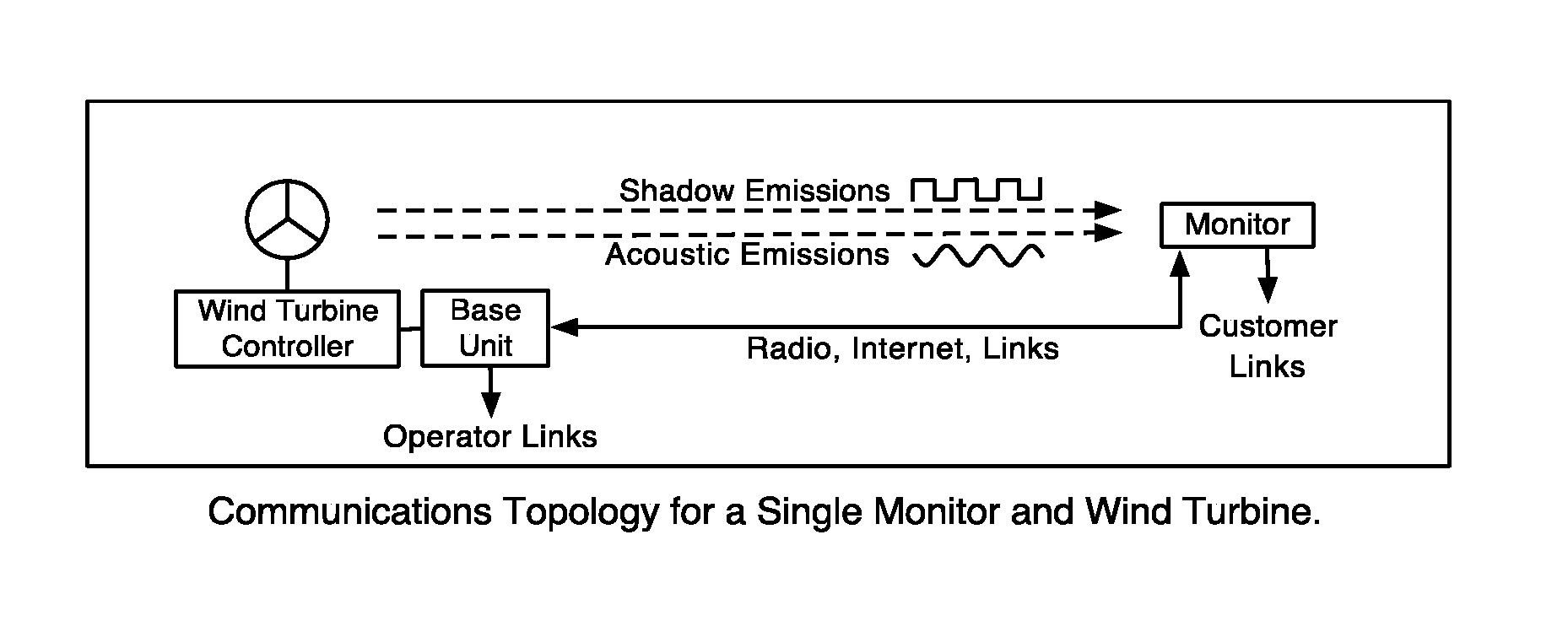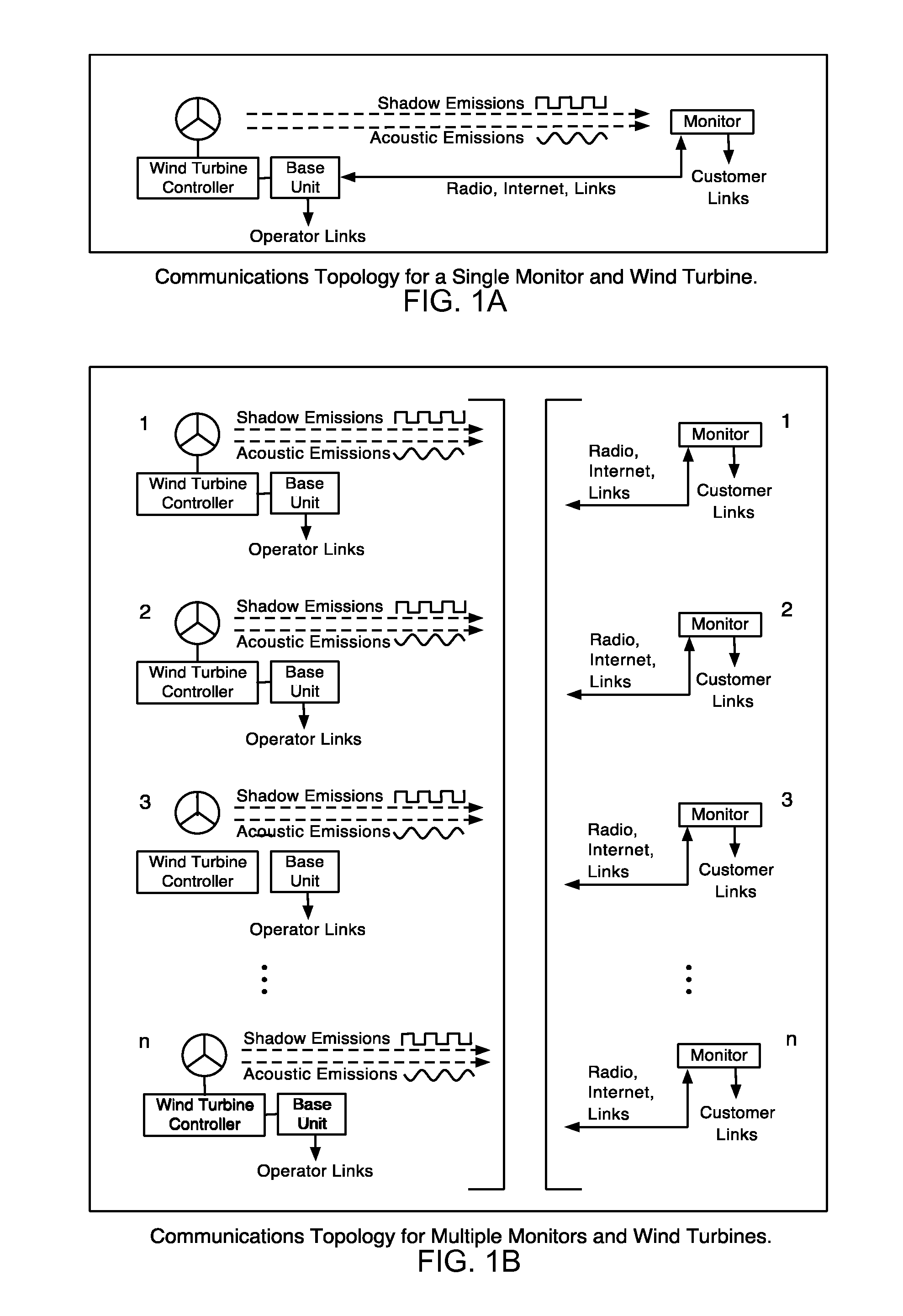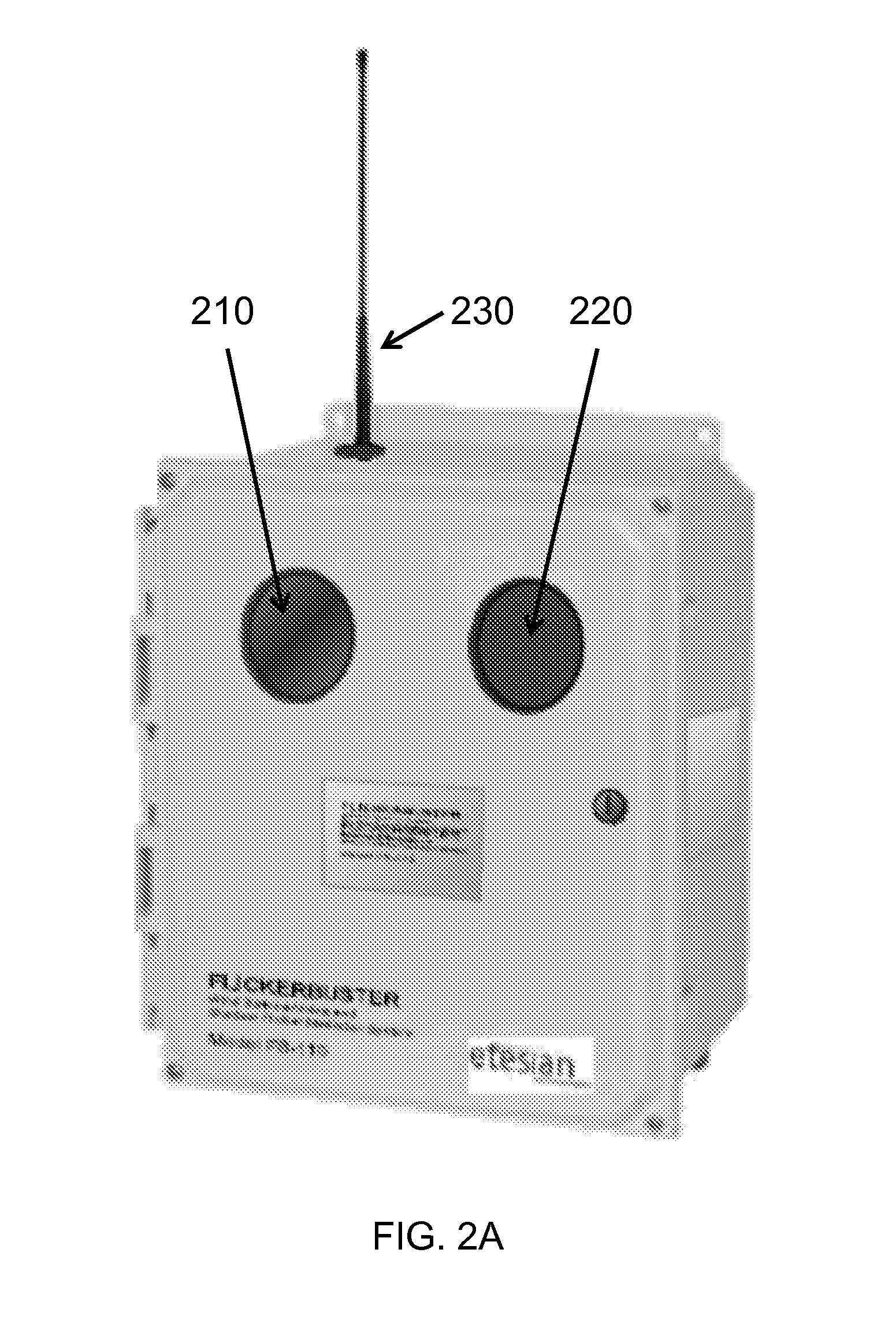Integrated wind turbine acoustic noise and shadow-flicker detection and mitigation system
- Summary
- Abstract
- Description
- Claims
- Application Information
AI Technical Summary
Benefits of technology
Problems solved by technology
Method used
Image
Examples
Embodiment Construction
The Problem
[0052]Around the world, utility-scale wind turbines are being installed where they can be seen and heard by those nearby. Occasionally, meteorological and operational conditions can create sound levels that exceed local noise criteria or cause stress to nearby residents. Also, certain times of the year it is possible for the sun to be in position to create a flickering shadow on a building such as a residence; this “shadow-flicker” can also be a source of stress to nearby residents.
[0053]Currently, residents living near (or persons who work near) wind turbines cannot signal the wind turbine to reduce noise or shadow-flicker. Instead, the affected people can only resort to telephoning the operator to make a complaint, or rely on the turbine operator to estimate noise or shadow-flicker levels at the nearby location. This is not a rigorous or timely process, and is unsatisfactory from both the affected person's and the operator's perspective.
[0054]Individuals who live or wor...
PUM
 Login to View More
Login to View More Abstract
Description
Claims
Application Information
 Login to View More
Login to View More - R&D
- Intellectual Property
- Life Sciences
- Materials
- Tech Scout
- Unparalleled Data Quality
- Higher Quality Content
- 60% Fewer Hallucinations
Browse by: Latest US Patents, China's latest patents, Technical Efficacy Thesaurus, Application Domain, Technology Topic, Popular Technical Reports.
© 2025 PatSnap. All rights reserved.Legal|Privacy policy|Modern Slavery Act Transparency Statement|Sitemap|About US| Contact US: help@patsnap.com



